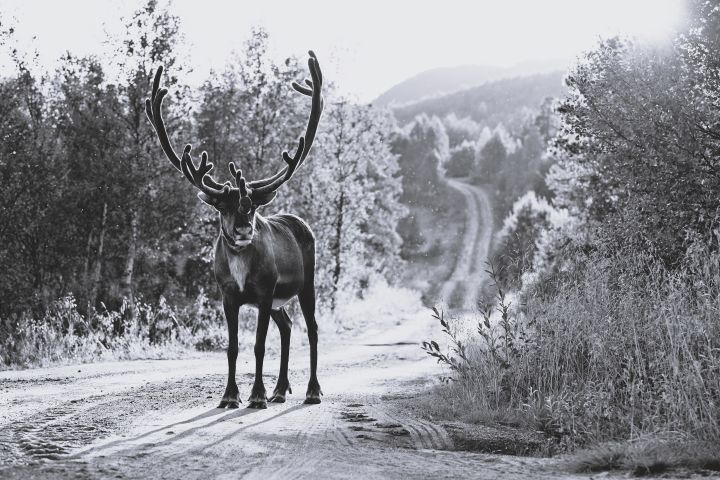Free Shipping and free Home Delivery on all orders above 50 £
Free Returns 30 days
Be aware of fake Haglöfs websites and advertisements. Read more.

Is it worth it?
April 2024
Is it worth it? The impact of heliskiing on Sweden’s wilderness
Sweden's mountains are a breathtaking natural wonder, spanning approximately 1,850 kilometers from the northern border near Norway to the heart of the country. This expansive and unique landscape of mountains, valleys, and forests is home to a diverse array of plants and animals, including birds, hares, foxes, and moose. It also serves as vital grazing land for reindeer.
Each year, countless tourists flock to this remarkable destination—often called Europes’s largest and last wilderness—to experience its stunning scenery, engage in outdoor activities, and embark on exciting adventures.
Among the many activities available, heliskiing stands out as a popular choice. Numerous companies cater to thrill-seekers, offering access to untouched mountain peaks, pristine snow, and serene, uncrowded runs in the remote Swedish wilderness—all without the physical exertion of traditional ascent. Heliskiing typically takes place from late winter through spring, coinciding with a critical time for wildlife.
During this period, animals in this region enter a phase of recovery following the challenges of winter—limited food supplies and harsh climates. It's a time of replenishment, rest, abundant food, and preparation for the next generation. However, the tranquility of this season is disrupted by the constant presence of helicopters shuttling skiers to and from the peaks.
The noise pollution generated by these aircraft has serious consequences for wildlife and reindeer. It not only drives animals from their habitats but also disrupts their breeding and foraging behaviors. Reindeer may flee their grazing areas, sometimes resulting in fatal falls or severe injuries. Pregnant animals of various species may abort their pregnancies or abandon their newborns, posing a threat to the entire ecosystem.
Despite these alarming impacts, current regulations fail to adequately address the issue, leaving the welfare of wildlife and reindeer in jeopardy. It's a stark contrast to Sweden's reputation as a frontrunner in animal welfare standards.
In light of these concerns, it's essential to question the value of heliskiing experiences. Is the thrill worth the toll it takes on our wilderness and its inhabitants?
The answer is clear: No. Heliskiing is unnecessary in a landscape as pristine as Sweden's mountains. Instead, we must strive to strike a balance between adventure and conservation, prioritizing the preservation of our unique wilderness and its ecosystems. The true essence of our mountains is best experienced through quiet exploration—whether on foot, skis, or bicycle—allowing us to coexist harmoniously with nature as it was intended.